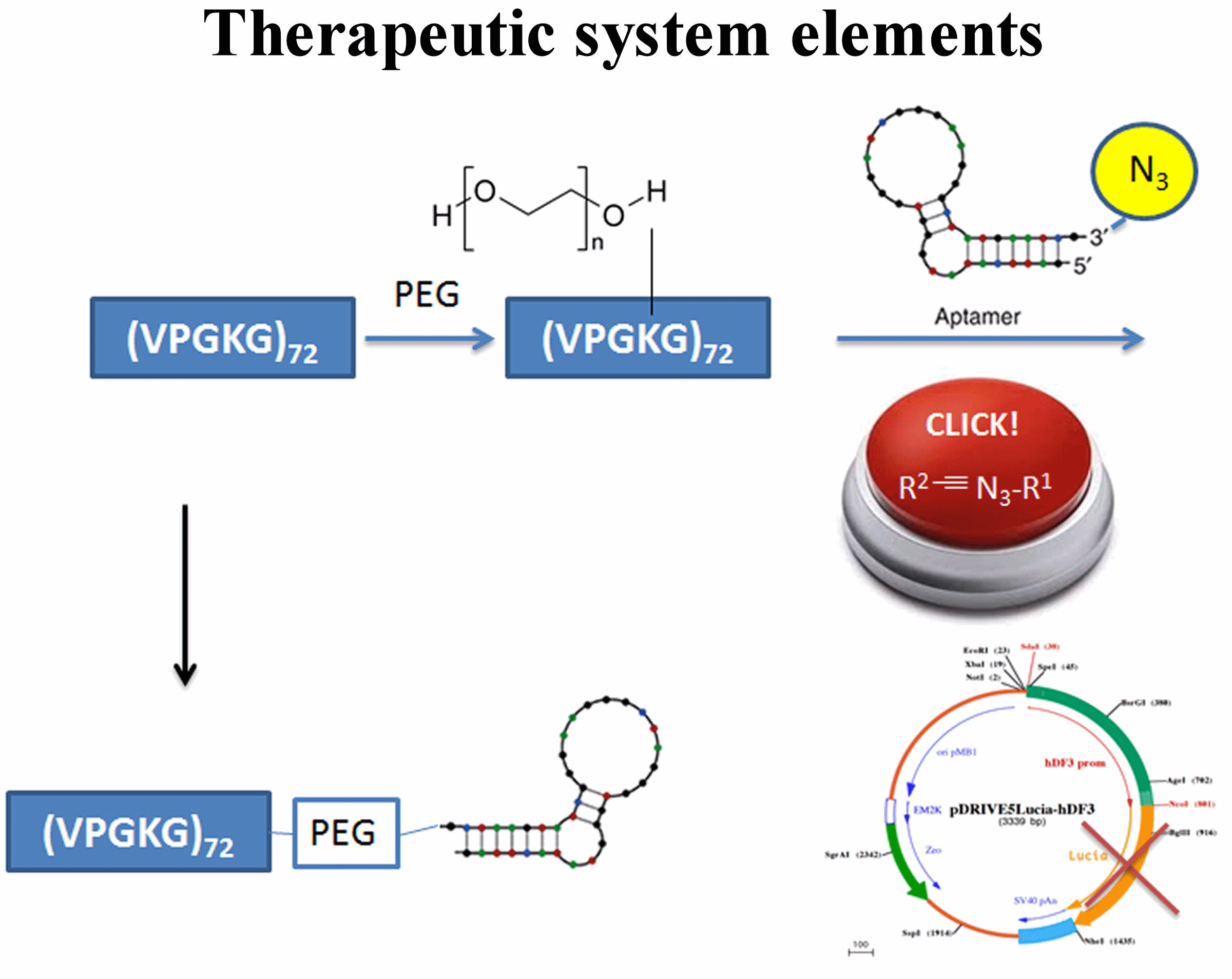Introduction: Elastin-like recombinamers are recombinant polymers inspired to natural elastin whose properties make them advanced biomaterials for several innovative biomedical applications[1]-[3]. Their production by biotechnological procedures allow the total control over their chemical /physical features such as surface charge, polydispersity, self-assembly and biocompatibility. The design of positively charged ELR to complex plasmid DNA is essential to trigger the formation of structures called polyplexes. One of the transmembrane glycoproteins, MUC1 is aberrantly overexpressed in breast cancer cells[4]. In this study, the development of a multicomponent system composed by: ELR functionalized with MUC1 aptamer and a therapeutic pDNA containing the gene codifying for a toxic protein was accomplished. Their ability to deliver the therapeutic material in MUC1 expressing tumor cell lines and xenograft in NUDE mice was tested.
Materials and Methods: ELR was obtained by genetic engineering techniques and produced in E. coli whereas its production, purification and characterization were performed as described elsewhere[5]. The click-conjugation of aptamers to polyplex was assessed by flow cytometry, zeta potential and absorbance measurements. The cytotoxicity viability was quantified by LIVE/DEAD and Alamar blue®. Transfection assays were accomplished with human breast tumoral cells, MCF-7, and normal human fibroblast, HFF-1. Balb/C NUDE mice were used for in vivo studies.
Results and Discussion: The ELR was characterized by sequencing, SDS-PAGE, DSC, FT-IR, NMR and MALDI TOF analysis. MUC1 aptamer was conjugated to the ELR by click chemistry. The resulted ELR-aptamer-pDNA complexes (Fig. 1) had a highly positive zeta potential and an appropriate size for cell uptake.
The cytocompatibility and the transfection ability of the complexes and the expression of the therapeutic plasmid by measurement of the cellular death was tested in vitro in the target tumoral (MCF-7) and in non-tumoral cells (HFF-1). The results showed a no cytotoxic polymeric based device able to transfect in a specific manner breast cancer cells and maintain a protective effect over the human normal cells.
In vivo assays with female nude mice showed a sustainable and dose-depending decrease in tumor growth volume when comparing with the control group during nearly one month of treatment.

Figure 1: Schematic representation of the transfecting system.
Conclusion: We have developed a complete non-viral gene delivery device formed by ELR bound covalently to MUC1 aptamer and complexed with a therapeutic pDNA containing a toxic gene for breast cancer therapy. The resulting polyplexes showed specific uptake with the toxic effect desired for the targeted tumoral cancer cells. These in vitro results were corroborated with in vivo studies where the decrease in breast cancer growth was observed. The ELR-aptamer device constitutes a promising strategy in the delivery of therapeutic genes of interest targeted to breast cancer.
Mineco MAT2013-41723-R; European Social Fund
References:
[1] Arias FJ et al. Curr Top Med Chem. 14:819-36 2014.
[2] Garcia-Arevalo C et al. Mol Pharm. 10:586-97 2013.
[3] Pina MJ et al. J Biomedical Mat Res. Part A 103: 3166-78 2015.
[4] Duraisamy S et al. Int J Oncol 31:671-77 2007
[5] Girotti A et al. J Mater Sci Mater Med15:479-84 2004